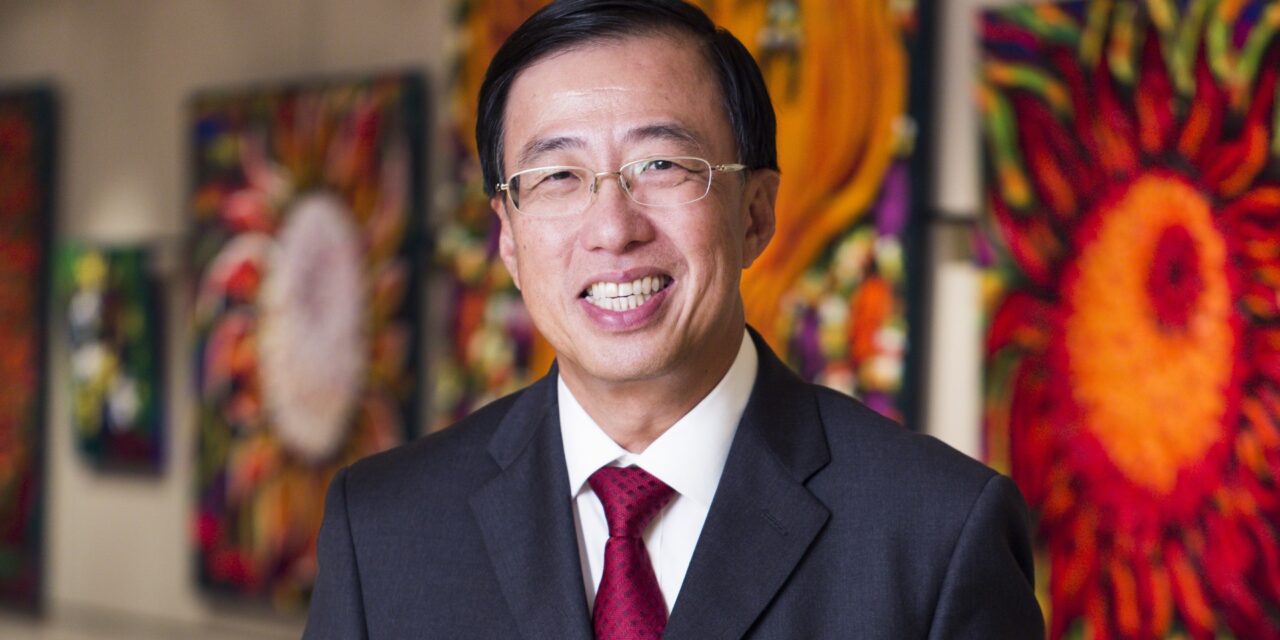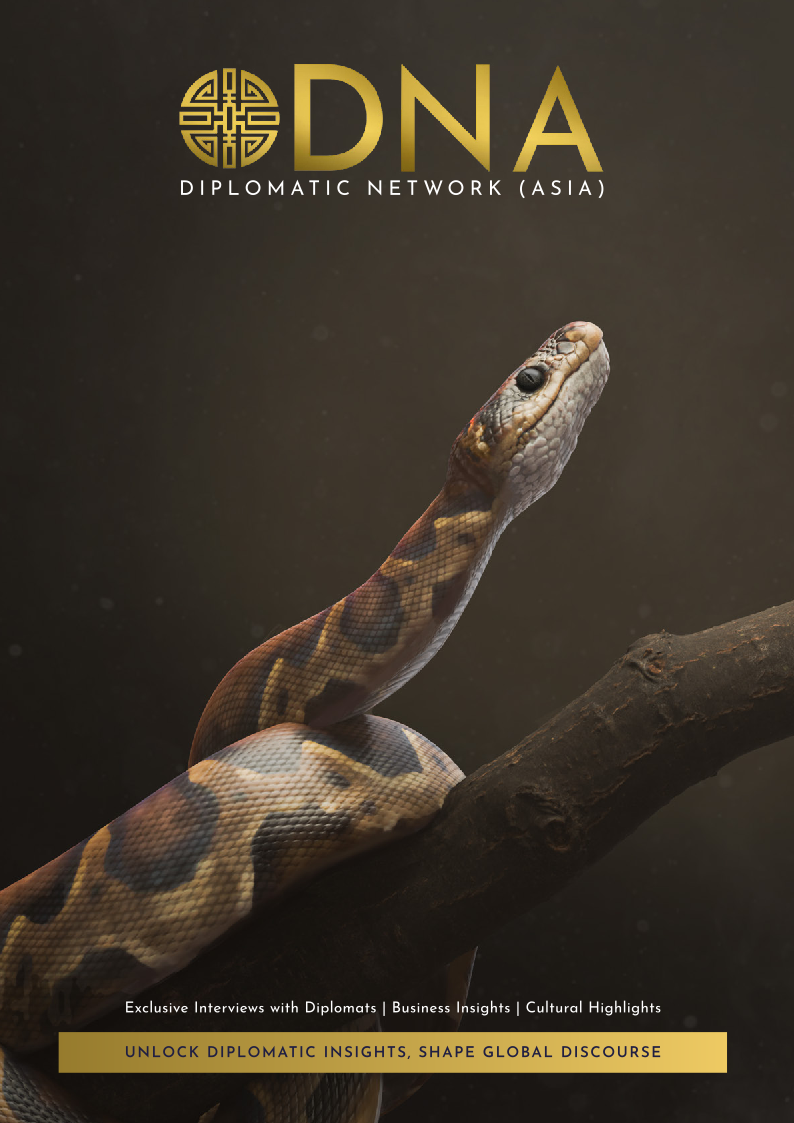Singapore has been at the forefront of global innovation for decades. Education has been a vital component in city-state’s engine which has led to its meteoric rise since the mid 20th century.
ITE Education Services CEO Bruce Poh spoke to Diplomatic Network (Asia) about education’s role in Singapore’s success and the future of education as new technologies infiltrate the sector, like artificial intelligence.
ITE Education Services is a subsidiary of the Institute of Technical Education. ITE was established as a post-secondary institution in 1992, under Singapore’s Ministry of Education. ITE is a provider of career and technical education and plays a vital role in developing the nation’s workforce.
Having been at the helm of ITE for 10 years and now ITEES, what does it mean to you, personally, to work within the realm of education?
I started my career after graduating from University with Hewlett Packard. Very soon, I was attracted to join the Singapore Economic Development Board to be part of the pioneering team to kick start the French-Singapore Institute, a government-to-government project to train highly skilled electronic technologists for the burgeoning electronic sector in Singapore. That was my first foray into developing skilled professionals. I spent 10 years in EDB’s Manpower Development division taking up various positions including assistant director of FSI, assistant director of Japan-Singapore Technical Institute – another G-to-G project – and deputy head of Applied Technology Group, etc. I was sent to Telemechanique in France, Intellidex in the US and Seiko in Japan for periods of two months to eight months for overseas attachments and training in the areas of microprogramming, robotics & machine vision and flexible manufacturing systems in the 1980’s.
In 1992, I was seconded from EDB playing a pioneering role in the start-up of Nanyang Polytechnic. I was instrumental in planning and developing the Polytechnic as an intelligent campus, establishing the e-learning infrastructure, maintaining strong links with key players in industry and overseas institutions, garnering the support of technology collaboration partners, and was in charge of the Centre for Quality. I was appointed deputy principal (development) of Nanyang Polytechnic in 2001. My key portfolios and responsibilities at Nanyang Polytechnic included appointments over a period of time as director of School of Information Technology, director of School of Design, and director of School of Business Management. I also spearheaded strategic initiatives and development projects, such as the setting up of the School of Life Sciences, and the establishment of the Bioinformatics Group, which focused on building capabilities and undertaking multi-disciplinary specialised projects in bioinformatics. I was also instrumental in setting up the USD67 million Chemical Process Technology Centre in Jurong Island, where Nanyang Polytechnic plays key roles as manager and training partner of EDB for the project.
In 2007, I was appointed chief executive officer of the Institute of Technical Education where I led in envisioning two five-year roadmaps – ITE Innovate, which aimed to achieve global leader status for innovations in technical education between 2010 and 2014, and ITE Trailblazer, which aimed to pioneer career & technical education between 2015 and 2019. Besides having a keen interest in industry and technology developments, I am passionate about organisational and innovation excellence, and capability development of staff and students. I believe strongly in being prepared for the next ‘S curve’ transformation of organisations. Under my leadership at ITE, ITE achieved many accolades, including Harvard-IBM Innovations Award for Transforming Government from Ash Center, Harvard Kennedy School in 2007; Singapore Public Service Premier Award for Organisational Excellence in 2011 and 2016; Aon Hewitt Best Employers’ Award in 2011; Singapore Quality Award with Special Commendation in 2011; Health Platinum Award in 2012; Green Mark Platinum Award for ITE Infrastructure in 2012; Human Capital Breakthrough Distinction Award in 2013; and UNESCO Wenhui Award for Innovations for Skills Development for the Future in 2015.
In 2017, I retired from ITE as its CEO and was appointed executive deputy chair of WorldSkills Singapore Council, and CEO at ITE Education Services, a subsidiary of ITE. My current roles entail the promotion and recognition of skills for careers and mobility, and the development of human capital through skills development in developing countries.
You can say that I stumbled into technical & vocational education & training, or TVET, because of the excitement of pioneering work. The pioneering work in TVET has seen me through 42 years and counting and has defined my lifelong career.
You’ve said in the past, “Be agile, be curious, and try to learn something new everyday”. What’s been interesting you recently in your own personal learning journey?
I have always been an advocate for applying new technologies for teaching and learning. I championed e-learning in the 1990s and 2000s in Nanyang Polytechnic and ITE. The advancement in this area including the use of augmented reality, virtual reality, mixed reality, the metaverse and digital twins in the teaching and learning of skills has improved by leaps and bounds. I am currently looking at using spatial artificial intelligence in the delivery of TVET. Spatial AI is a rapidly growing field that focuses on integrating AI and spatial data. Spatial AI extracts insights from spatial data, understands patterns and relationships, and makes predictions and decisions based on that information. This is an exciting area where you can use spatial AI to develop teaching material with the creation of virtual work environments with the knowledge of industrial systems and equipment in a much shorter time frame. There is also the potential of scaling up virtual and immersive “authentic” real work environments for a huge number of learners, remote learning, self-directed and customised learning, peer learning, collaboration across geography and the list goes on.
What sort of change has ITEES brought about in other countries through education?
Over the last 20 years since ITEES was established in 2003, many countries worldwide have recognised the importance of skills and investing in TVET and have engaged ITEES in their TVET transformation journey. To date, ITEES has supported 30 countries in developing their TVET capabilities and impacted more than 12,000 leaders and trainers with more than 14,000 benefiting through multiplier training. There are many interesting success stories and in fact ITEES just published its 20th anniversary book titled “A Surprising Story – 20 Years of Impacting Lives Globally”. You can find the book online through the ITEES website. One of the many success stories is the project in the state of Odisha, India. ITEES worked with our partners from the government of Odisha in transforming their TVET and transforming the lives of their youths. They started with a decisive decision to change the use of a brand new 18-story World Trade Center to the World Skill Center. This very extensive skill transformation project involved the development of 400 TVET leaders and trainers, offering of eight courses, the deployment of ITE key management staff to Odisha, the issuance of the ITEE Skills Qualification (ISQ) to WSC graduates and the implementation of the Singapore Internship Programme for top graduates. The success led to a current second phase of offering another nine new courses on new sites, and the deployment of a high-level full-time management staff to spearhead new TVET initiatives for WSC and the hundreds of polytechnics and industrial training institutes in Odisha.
How do you think Artificial Intelligence is going to change the broader education industry? And more specifically, how will it affect TVET?
The emergence of AI has already impacted businesses and society. Going forward the use of AI will gather momentum and will also impact the broader education sector. The emergence of generative AI like ChatGPT has already been making waves in all fields. Governments and policymakers are playing a catch-up game to regulate the ethical use of AI. While the dangers of AI misuse are real and can be dangerous, the benefits of the benevolent use of AI cannot be ignored and will be revolutionary.
Definitely, the potential uses of generative AI in TVET education will have a big impact on how we teach and learn skills. We need to teach our young and even the current workforce how to leverage generative AI in acquiring new skills, enhancing our skills, and use it to solve specific problems.
In ITE/ITEES we are already experimenting with the use of AI in the management of safety in a work environment and AI marking for computer-aided-design assignments. In the arena of e-learning, vast opportunities are presenting themselves in the TVET space using spatial AI to create the space environment for skills training in a jiffy. The use of AI could revolutionise the delivery of skills training, teaching, learning and relearning of TVET in ways that we might not even envisage.
There’s the Singaporean adage “Singapore’s greatest resource is its people”. Given Singapore’s spectacular development since its birth as a city-state in the 1960s, can you talk about the importance of human capital, and developing human capital, for a nation?
Since the 1960s, Singapore has always focused on developing its human resources to its maximum potential. In particular, Singapore’s TVET education system has evolved in tandem with its economic development of the country. In the labour-intensive phase of the 1960s and the skills-intensive phase in the 1970s, the TVET Institutions trained skilled workers for Singapore as it adopted an export-oriented manufacturing industry strategy in a factor-driven economy. In the technology and capital-intensive phase in the 1980s and early 1990s, the TVET Institutions responded by training high-tech skilled manpower to meet the increasingly highly automated factories in an Investment-driven economy. In the technology and capital-intensive phase in the late 1990s and 2000s, TVET institutions responded once again to the diversification of industry and business sectors including high value-added industries like wafer fabrication plants, pharmaceuticals, petrol and chemical process industry, life sciences and biomedical devices, financial services, creatives services, among others, in an innovation and knowledge-driven economy. Again in the late 2010s, the SkillsFuture Committee articulated the strategy for skills training needed with 34 skills frameworks for the future economy as articulated by the Committee on the Future Economy, which developed industry transformation maps for the 23 industry sectors.







